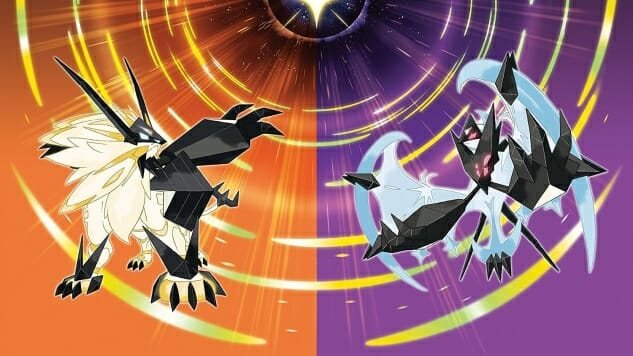Pokémon Ultra Sun and Ultra Moon Smartly Remix the Originals

The “third” version of Pokémon games is usually an inevitability by tradition. Like Yellow, Crystal, Emerald and Platinum before it, Pokémon Ultra Sun and Ultra Moon acts as a sort of “remix” of last year’s Pokémon Sun and Moon. Touted as an “enhanced” version of those previous games, I found the term “definitive” to be more appropriate. While I found my time with the games to be satisfying, it was due more to some minor disappointments I harbored with the original Sun and Moon.
That’s not to say that the core Sun and Moon games were not enjoyable. The Generation VII games represented a landmark for the handheld series, featuring 3D movement in the environment and numerous quality-of-life changes and additions that made the entire “gotta catch ‘em all” experience easier and streamlined. For example, as in the original games, no longer are HM slaves required thanks to the handy new Poké Ride feature. And smaller changes are retained, like the feature to instantly add captured Pokémon to your already full party. The battle user interface still allows players to keep track of status effects to Pokémon on the field, and reminds players whether or not certain moves are effective against opponents. Of course, changes like the Exp. Share item applying to your entire party arguably made the game too easy in a way.
At first glance, all of Ultra’s additions and “enhancements” to the original game appear to be quite minor. Initially I had the sense that developer Game Freak was “filling in gaps” with content or ideas that may not have made the final cut with Sun and Moon. “Totem Stickers” provide the player with a scavenger hunt throughout the game, found in random spots all around the islands of Alola. Early on you are introduced to a new Ride Pokémon, Mantine, which allows you to surf through the water. Unlike the other surfing Pokémon, Lapras and Sharpedo, Mantine really lets the player surf and perform tricks on waves. Additionally, this has the practical use of surfing between islands, something that was just achieved through a less fun and short flying or boat animation in the original games.
Your adorable pal, the sentient Rotom Pokédex, has a neat little feature with the Roto Lotto, letting the player win certain abilities—the chance to use a Z-Power again, for example. I often forgot about this small new feature, though, and neglected to use these during battle. Similar to the Battle Tower, Battle Frontier and Battle Factory in previous “third versions,” the Battle Agency within the returning online Festival Plaza allows players to rent absurdly powerful Pokémon and do battle against opponents.
But the term “remix” kept popping into my head—some changes seemed to be for change’s sake, to showcase that this was indeed “different.” The game tries to convince the player of this from the very beginning, changing the scenario in which the protagonist meets the three main starter Pokémon (they spring into action to save poor, defenseless you in a wild Pokémon encounter). There are moments like this throughout the entire game—a change in the Elite Four roster for example, or alternative outcomes to essential story moments. Or maybe with small interactions, with the game now allowing the player to interact with cute little pocket monsters on the field and play a game of peek-a-boo with them. I remember being led to the area in which you first learn about Mantine Surf and going “huh, I don’t remember this in the old game,” but not so much “wow, this is all brand new and cool!” Much of the music in the game, most notably the trainer battle music, is literally remixed, and like previous “third” versions, some aesthetic changes to the game’s UI are included, in case it wasn’t obvious enough that this is a different game.
While I may seem a little hard on the smoke-and-mirror changes that Ultra brings, some significant additions truly did elevate the original games for me. While I loved my playthrough of Sun, I felt some of the bigger ideas and concepts never truly came to fruition, and actually felt quite unfinished. I loved the Hawaii-themed new region of Alola and the themes of tradition and spirituality that came with it—which is why I found the sci-fi feeling of the Ultra Beasts and the machinations of the mysterious Aether Foundation to be a fascinating juxtaposition that I hoped the games would explore.
